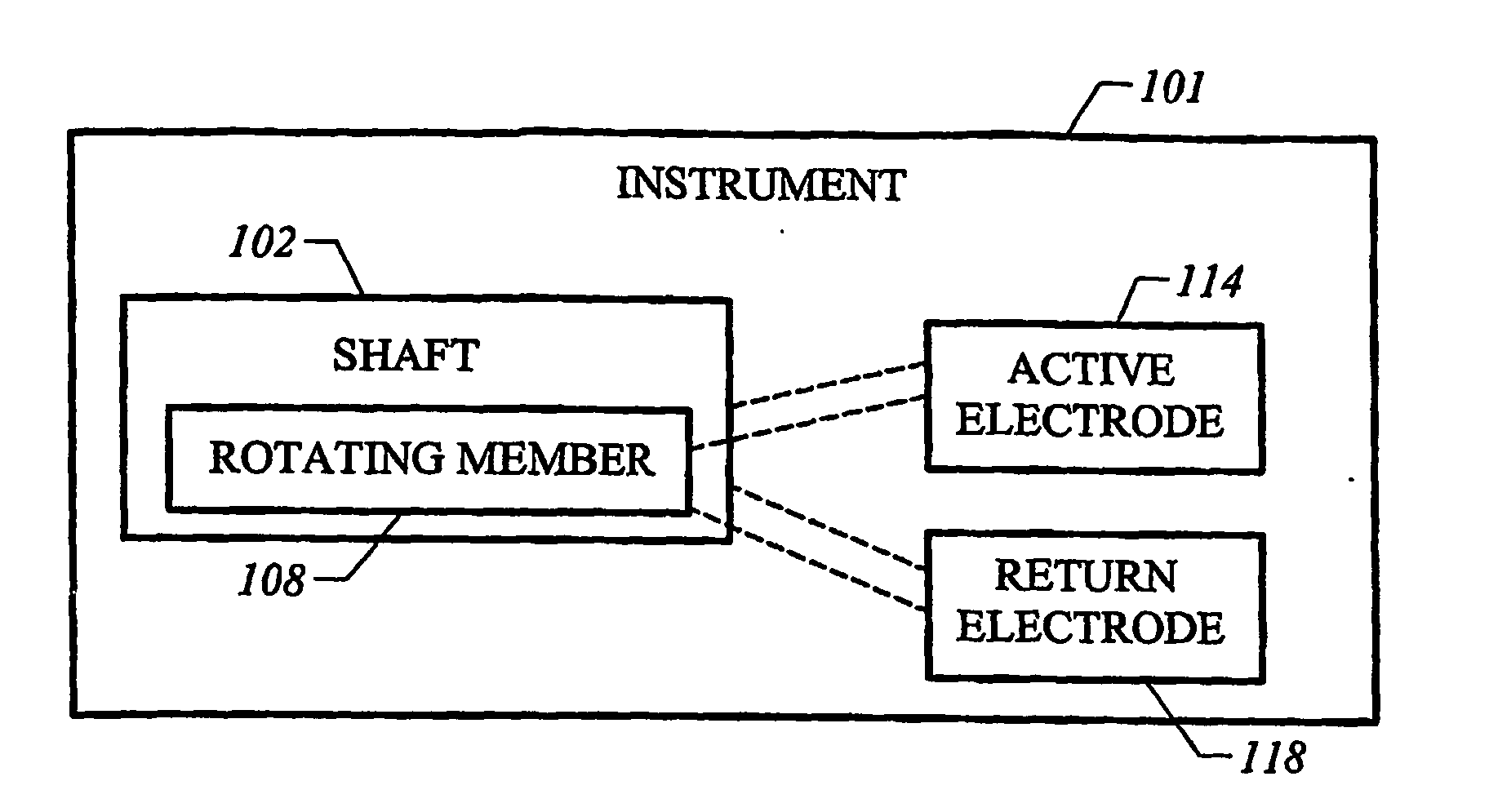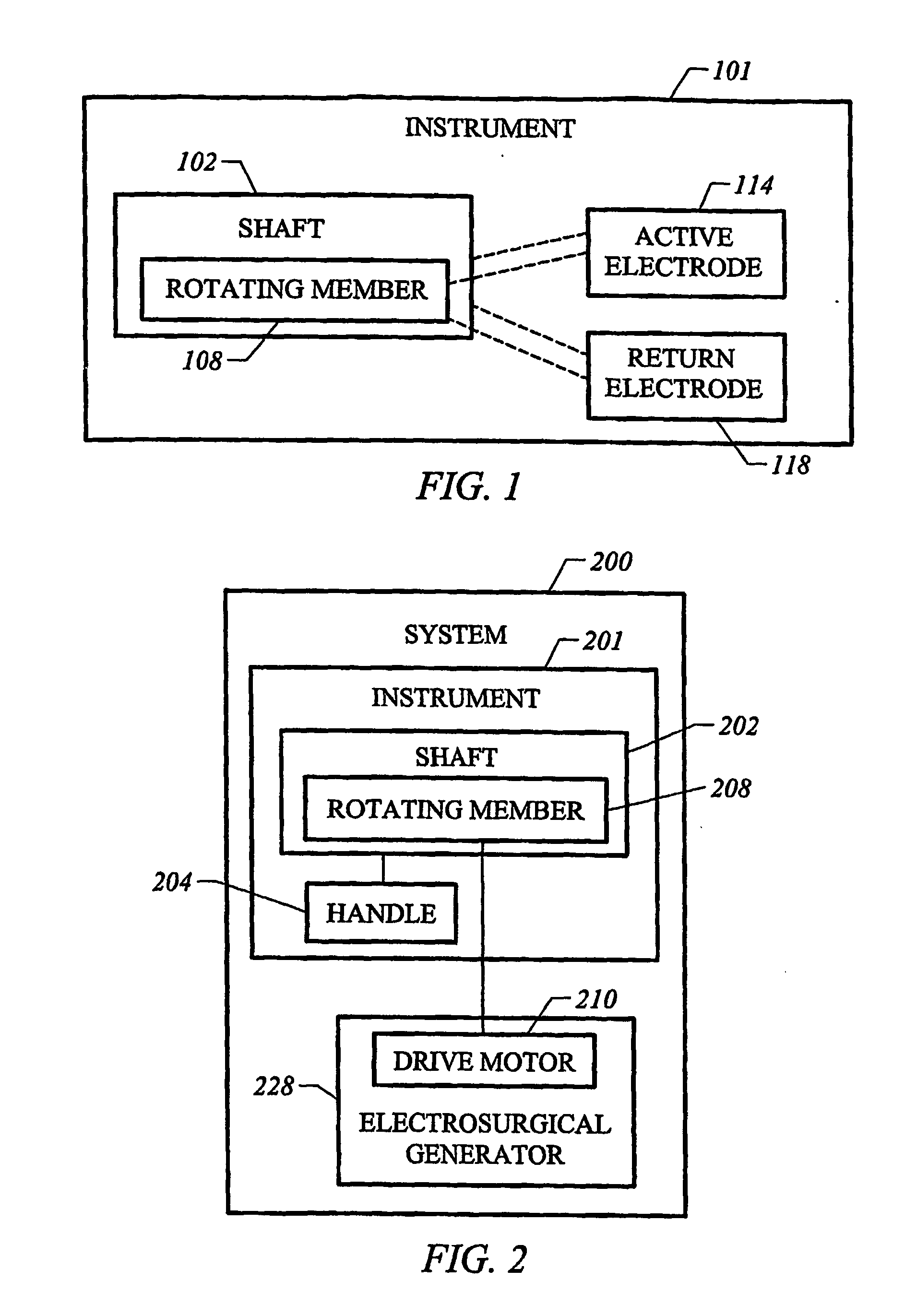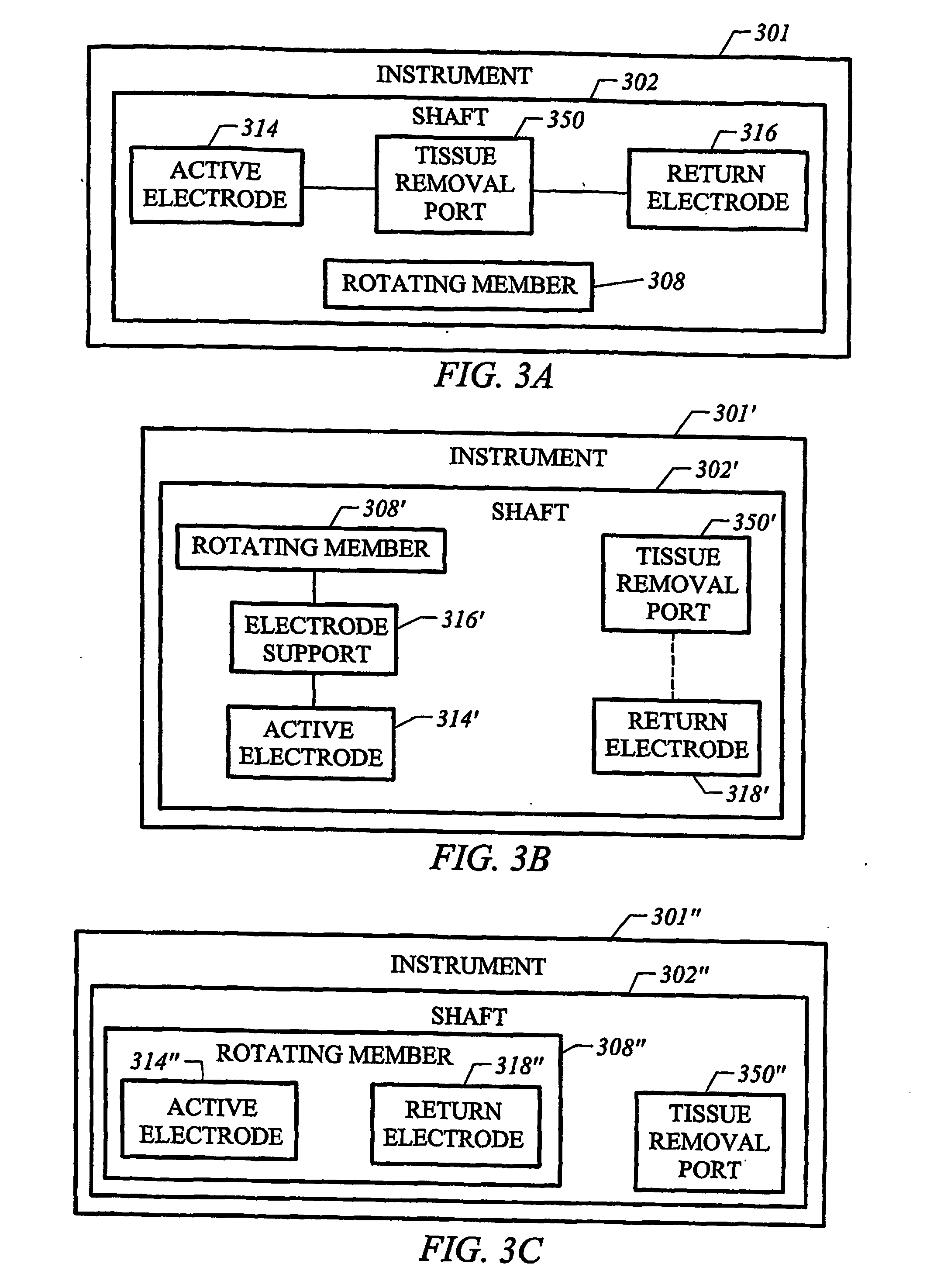Rotary electrosurgical apparatus and methods thereof
a technology of electrosurgical equipment and rotary electrodes, applied in the field of electrosurgical equipment and methods thereof, can solve the problems of affecting the surgical field of surgeons, affecting the surgical field, so as to promote initiation and maintenance, improve the surgeon's visibility of the surgical field, and improve the effect of surgical visibility
- Summary
- Abstract
- Description
- Claims
- Application Information
AI Technical Summary
Benefits of technology
Problems solved by technology
Method used
Image
Examples
Embodiment Construction
[0039] The present invention provides systems, apparatus, and methods for selectively applying electrical energy to a target tissue of a patient, and for the controlled removal of the target tissue via molecular dissociation of target tissue components. The invention is particularly suited to remove or sequentially remove a portion of the target tissue as a rotating member rotates within a shaft. The instrument includes a tissue removal port arranged at a distal end portion of the shaft, and at least one active electrode disposed at the working end of the instrument. The active electrode(s) are typically disposed either at a distal portion of the shaft adjacent to the tissue removal port, or on the rotating member. In the latter situation, the active electrode(s) are configured to traverse the tissue removal port as the rotating member rotates within the shaft.
[0040] Systems, apparatus, and methods of the invention are applicable to a broad range of procedures, including: open proc...
PUM
 Login to View More
Login to View More Abstract
Description
Claims
Application Information
 Login to View More
Login to View More - R&D
- Intellectual Property
- Life Sciences
- Materials
- Tech Scout
- Unparalleled Data Quality
- Higher Quality Content
- 60% Fewer Hallucinations
Browse by: Latest US Patents, China's latest patents, Technical Efficacy Thesaurus, Application Domain, Technology Topic, Popular Technical Reports.
© 2025 PatSnap. All rights reserved.Legal|Privacy policy|Modern Slavery Act Transparency Statement|Sitemap|About US| Contact US: help@patsnap.com



